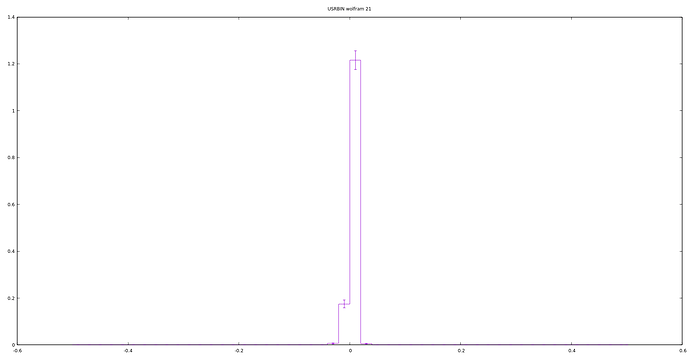Dear fluka experts and users,
Im running a simulation where i use electron beam of 120Mev energy and i use a target of tungsten.i see in the runninng results the following :
1.
1.9948E-01 (100.) GeV available per beam particle divided into
Prompt radiation Radioactive decays
0.0000E+00 ( 0.0) 0.0000E+00 ( 0.0%) GeV hadron and muon dE/dx
4.1750E-05 ( 0.0%) 0.0000E+00 ( 0.0%) GeV electro-magnetic showers
0.0000E+00 ( 0.0%) 0.0000E+00 ( 0.0%) GeV nuclear recoils and heavy fragments
0.0000E+00 ( 0.0%) 0.0000E+00 ( 0.0%) GeV particles below threshold
0.0000E+00 ( 0.0%) 0.0000E+00 ( 0.0%) GeV residual excitation energy
0.0000E+00 ( 0.0%) 0.0000E+00 ( 0.0%) GeV low energy neutrons
1.9944E-01 (****) 0.0000E+00 ( 0.0) GeV particles escaping the system
0.0000E+00 ( 0.0%) 0.0000E+00 ( 0.0%) GeV particles discarded
0.0000E+00 ( 0.0%) 0.0000E+00 ( 0.0%) GeV particles out of time limit
-2.1590E-08 (-0.0%) GeV missing
what does it mean?do all the particles escape the system?and if so how do we take results about the energy deposition ,as all particles leave without none of them to stop?do we count the amount of their energy that they leave?but no energy is deposited by EM showers ?
2. the energy deposition dencity is high only very close to the beam and there is almost no energy deposited on the rest of target’s width .is this normal?

3.also in order to plot the particle fluence spectrum,should i choose the y or *y demonstration at USRBDX and USRTRACK(in usrtrack i chose linear climax ?)
4.i was asked to have a beam of charge Q=75pC per bunch ,which means 468.113.182 electrons.Was it right to put this as the number of primary histories,or it has another meaning?
im attaching my flair file:
wolfram.flair (2.2 KB)
im looking forward for you reply .thanks in advance!
